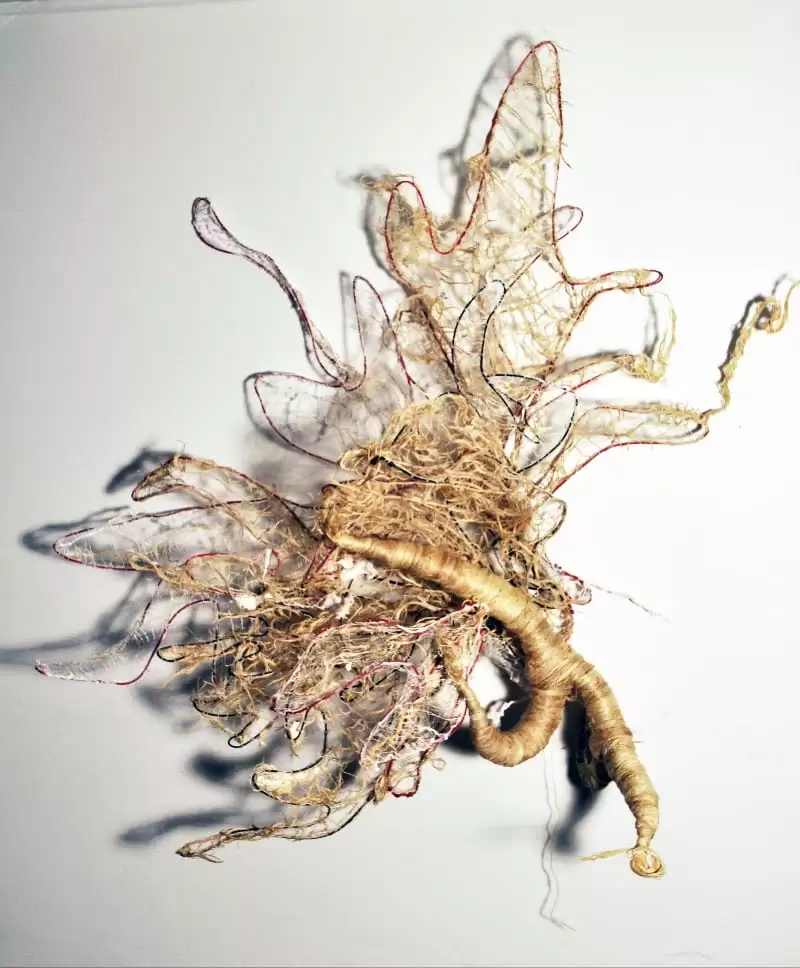kó is pleased to announce its participation in the Focus Section of The Armory Show, New York, September 9 – 11, 2022: a curated section dedicated to solo and dual artist presentations that examine the intersectionality of issues surrounding the environment within South-South ecologies, focusing on personal and political climates as they interact with race and gender.

Nnenna Okore and Ozioma Onuzulike hail from Nigeria’s prestigious Nsukka school, an experimental art department at the University of Nigeria, Nsukka, known for its focus on conceptual and material processes. The Nsukka School is a term used to distinguish artists who have studied and/or taught at the Fine and Applied Arts Department at the University of Nigeria, Nsukka, and who share a critical engagement in both their visual and theoretical fields.
An important center for art education in Nigeria, the art department at Nsukka has been spearheaded by luminaries such as Nigerian modernists Uche Okeke and Chike Aniakor in the early 1970s, and has subsequently been led by pioneering artists including Obiora Udechukwu and El Anatsui, stressing the exploration of ideas, materials and forms sourced from the environment.
The Nsukka School is best known for the revival of Uli, an Igbo art tradition that was historically used for body art and wall murals, placing this visual language into contemporary art discourses. As a descriptive label, the Nsukka School references a stylistic heritage whose formal and aesthetic codes draw from a creative ideology that is conceptually idealized, experimentally driven and intellectually grounded. Many of these artists are known for a stylistic regime that critically engages with the materiality and metaphoric value of both natural and man-made objects. The core thesis of Nsukka school art centers on the use of indigenous knowledge to interrogate local and global spheres of art practice.
In 2021, kó organized a three-part exhibition series titled The New Nsukka School, which re-examined its conceptual and material practices through a contemporary lens. This presentation at The Armory Show furthers the gallery’s exploration into the rich artistic trajectory of the Nsukka School’s contemporary practices.
Nnenna Okore, a graduate of Nsukka, creates sculptures and installations that combine natural and discarded materials to create abstract forms. Working with the processes of weaving, sewing, twisting and dying, her work is often inspired by the visual characteristics of Eastern Nigeria. Okore focuses on concepts of recycling, transformation and regeneration of forms based on observations from ecological and manmade environments. These biomorphic formations often examine her dual Nigerian and American identity. For The Armory Show, kó will present a selection of Okore’s diverse practices including ceramic and burlap textiles and jute wall sculptures, as well as her newest body of work incorporating vinyl prints and bioplastics of densely-textured natural forms.
Ozioma Onuzulike, who currently serves as Professor of Ceramic Art and African Art and Design History, as well as Director of the Institute of African Studies at Nsukka, explores the aesthetic, symbolic and metaphorical nature of the clay-working processes – pounding, crushing, hammering, wedging, grinding, cutting, pinching, punching, perforating, burning, and firing. His recent work is inspired by yam tubers, palm kernel shells and honeycombs which he mass-produces in terracotta and weaves together in often laborious processes. He configures a multiplicity of the individual units in ways that call attention to burning socio-political and environmental issues, such as reckless politics, bad governance, imperialism, terrorism and climate change.
For The Armory Show, Onuzulike has created three new ceramic tapestries, made from thousands of ceramic palm kernel shell beads with glazed rims and glass inlays, in addition to natural palm kernel shells, terracotta, and copper rings. Adopting the laborious process of firing the materials through multiple kilns, each firing creates unique colors and textures in transforming the clay, oxides, glazes and recycled glass.
The natural palm kernel shells were found abandoned under the palm trees after fruit harvests, which have become dried and hollow over a long period of time. Onuzulike’s works examine Africa’s history and are metaphors for socio-environmental turmoil. The beads and palm kernel shells reference the slave trade and their association with high social status, and the titles and forms allude to traditional African dress associated with royalty and opulence.
©2022 Nnenna Okore, Ozioma Onuzulike, kó





